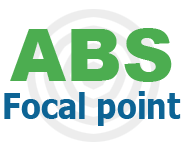
category_news
What are your ABS obligations as a user of genetic resources?
If you work with genetic resources, you may have Access and Benefit-Sharing (ABS) obligations under the EU ABS Regulation and the national ABS legislation of the provider country. What are your ABS obligations as a user of genetic resources in the EU?
First, it is important to know whether you are utilising genetic resources. If you are not a user under the EU ABS Regulation (Regulation (EU) 511/2014), you have no ABS obligations under this Regulation. To determine this, read the articles ‘Are you a user of genetic resources?’ and ‘EU ABS Regulation: in or out of scope?’, and use the ABS Focal Point’s interactive help tool.
Do note that some provider countries have established national access legislation with their own interpretation of ‘utilisation of genetic resources’, which may differ from the EU interpretation of the Nagoya Protocol. Even if you are not a user under the EU ABS Regulation, you still need to comply with national ABS legislation.
What do I need to do if I am a user of genetic resources?
If you are a user of genetic resources in the European Union, you are required to comply with the EU ABS Regulation as well as with the ABS legislation of the genetic resource’s provider country. In the sense of the EU ABS Regulation, ‘provider country’ means the country of origin of the genetic resource or any (other) Party to the Nagoya Protocol that has acquired the genetic resource in accordance with the Convention on Biological Diversity. ‘Country of origin’ means the country which possesses the genetic resource in in-situ conditions.
Look up the ABS legislation. Check the access legislation of the provider country on the ABS Clearing-House website (absch.cbd.int) and/or contact the country’s National Focal Point (NFP) to request information about national access legislation. Do keep in mind that even if a country has not published access legislation on the ABS Clearing-House website, there may still be applicable access legislation. In this case, it is recommended to contact the country’s NFP for more information.
Ask for permission. If required by the provider country, request Prior Informed Consent (PIC) from the provider country’s Competent National Authority (CNA). Many countries have published contact details and the procedure for obtaining PIC on the ABS Clearing-House website (absch.cbd.int).
Draw up a contract. Negotiate the terms of access with the provider of the genetic resource and document these terms in a contract (Mutually Agreed Terms, MAT). Use and transfer the genetic resources obtained only in accordance with the conditions as stated in the MAT.
(Optional) Request publication of a certificate. Ask the provider country to publish an internationally recognised certificate of compliance (IRCC) on the ABS Clearing-House website. While this is not required by law, having an IRCC can help you to minimise your administrative burden. Read about IRCCs: ‘The internationally recognised certificate of compliance (IRCC) of the Nagoya Protocol’.
Keep records. Keep relevant information and documents for at least 20 years after termination of use and transfer this information to any subsequent users of the genetic resource. Article 4, paragraph 3 of the EU ABS Regulation specifies the information you need to collect to fulfil your obligations in this field.
Submit a declaration. In some situations, you should submit a due diligence declaration. For more information, read ‘To DECLARE or not to DECLARE: when to submit a due diligence declaration’.
